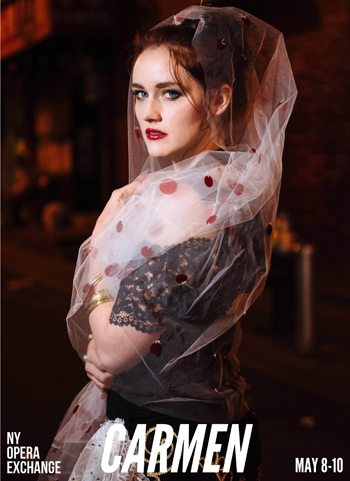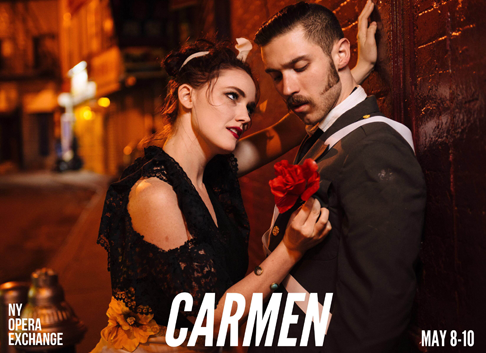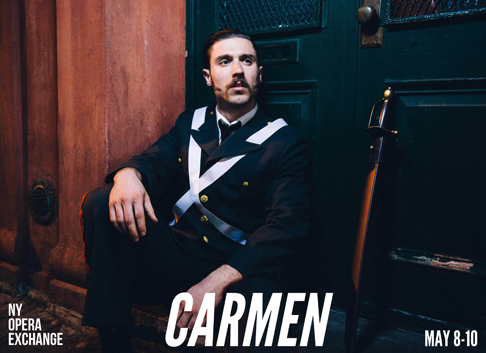Recently in Performances
English Touring Opera are delighted to announce a season of lyric monodramas to tour nationally from October to December. The season features music for solo singer and piano by Argento, Britten, Tippett and Shostakovich with a bold and inventive approach to making opera during social distancing.
This tenth of ten Live from London concerts was in fact a recorded live performance from California. It was no less enjoyable for that, and it was also uplifting to learn that this wasn’t in fact the ‘last’ LfL event that we will be able to enjoy, courtesy of VOCES8 and their fellow vocal ensembles (more below …).
Ever since Wigmore Hall announced their superb series of autumn concerts, all streamed live and available free of charge, I’d been looking forward to this song recital by Ian Bostridge and Imogen Cooper.
Although Stile Antico’s programme article for their Live from London recital introduced their selection from the many treasures of the English Renaissance in the context of the theological debates and upheavals of the Tudor and Elizabethan years, their performance was more evocative of private chamber music than of public liturgy.
Evidently, face masks don’t stifle appreciative “Bravo!”s. And, reducing audience numbers doesn’t lower the volume of such acclamations. For, the audience at Wigmore Hall gave soprano Elizabeth Llewellyn and pianist Simon Lepper a greatly deserved warm reception and hearty response following this lunchtime recital of late-Romantic song.
For this week’s Live from London vocal recital we moved from the home of VOCES8, St Anne and St Agnes in the City of London, to Kings Place, where The Sixteen - who have been associate artists at the venue for some time - presented a programme of music and words bound together by the theme of ‘reflection’.
'Such is your divine Disposation that both you excellently understand, and royally entertaine the Exercise of Musicke.’
‘And there was war in heaven: Michael and his angels fought against the dragon; and the dragon fought and his angels, And prevailed not; neither was their place found any more in heaven … that old serpent … Satan, which deceiveth the whole world: he was cast out into the earth, and his angels were cast out with him.’
There was never any doubt that the fifth of the twelve Met Stars Live in Concert broadcasts was going to be a palpably intense and vivid event, as well as a musically stunning and theatrically enervating experience.
‘Love’ was the theme for this Live from London performance by Apollo5. Given the complexity and diversity of that human emotion, and Apollo5’s reputation for versatility and diverse repertoire, ranging from Renaissance choral music to jazz, from contemporary classical works to popular song, it was no surprise that their programme spanned 500 years and several musical styles.
The Academy of St Martin in the Fields have titled their autumn series of eight concerts - which are taking place at 5pm and 7.30pm on two Saturdays each month at their home venue in Trafalgar Square, and being filmed for streaming the following Thursday - ‘re:connect’.
The London Symphony Orchestra opened their Autumn 2020 season with a homage to Oliver Knussen, who died at the age of 66 in July 2018. The programme traced a national musical lineage through the twentieth century, from Britten to Knussen, on to Mark-Anthony Turnage, and entwining the LSO and Rattle too.
With the Live from London digital vocal festival entering the second half of the series, the festival’s host, VOCES8, returned to their home at St Annes and St Agnes in the City of London to present a sequence of ‘Choral Dances’ - vocal music inspired by dance, embracing diverse genres from the Renaissance madrigal to swing jazz.
Just a few unison string wriggles from the opening of Mozart’s overture to Le nozze di Figaro are enough to make any opera-lover perch on the edge of their seat, in excited anticipation of the drama in music to come, so there could be no other curtain-raiser for this Gala Concert at the Royal Opera House, the latest instalment from ‘their House’ to ‘our houses’.
"Before the ending of the day, creator of all things, we pray that, with your accustomed mercy, you may watch over us."
The doors at The Metropolitan Opera will not open to live audiences until 2021 at the earliest, and the likelihood of normal operatic life resuming in cities around the world looks but a distant dream at present. But, while we may not be invited from our homes into the opera house for some time yet, with its free daily screenings of past productions and its pay-per-view Met Stars Live in Concert series, the Met continues to bring opera into our homes.
Music-making at this year’s Grange Festival Opera may have fallen silent in June and July, but the country house and extensive grounds of The Grange provided an ideal setting for a weekend of twelve specially conceived ‘promenade’ performances encompassing music and dance.
There’s a “slide of harmony” and “all the bones leave your body at that moment and you collapse to the floor, it’s so extraordinary.”
“Music for a while, shall all your cares beguile.”
The hum of bees rising from myriad scented blooms; gentle strains of birdsong; the cheerful chatter of picnickers beside a still lake; decorous thwacks of leather on willow; song and music floating through the warm evening air.
Performances

15 May 2015
The Singers Sparkle in New York Opera Exchange’s Carmen
New York Opera Exchange’s production of Carmen from May 8th to 10th highlighted that which opera devotees have been saying for years: Opera, far from being dead, is vibrant and evolving.
Audience members packed into the church hall at the Church of the Covenant on
East 42nd Street to witness the spectacle of a small, emerging
company taking on one of the grandest operas in the
common repertory.
While not a traditional performance space, the production team managed to
make this small church hall feel much like a genuine theater. Creative lighting
placement added to the authenticity of the theatricality, and while the set was
simple and unchanging for the duration of the opera, it was beautifully
designed and offered a basic backdrop for the action of the opera. The
stadium-style set suggested a metaphor oft-utilized in many previous Carmen
productions — that Carmen and Jose are but two sparring members of a
bullfighting ring.

Indeed, the entirety of the production existed in the realm of the
traditional, taking very few liberties that might have contributed to a more
creatively imagined Carmen. At the same time, the production found its
strength in remaining traditional. The costuming was temporally nebulous and at
times inconsistent, but in general costume designer Taylor Mills offered
beautiful displays of craftsmanship, in particular with Micaela’s and
Carmen’s attire. The score was well-preserved, with few cuts. This allowed
for the audience to experience beautiful music often missing from productions
by smaller companies, particularly the chorus numbers, which shimmered in this
production, especially those sung by the female chorus.
The orchestra was on the same level as the audience, but partitioned to
create a semblance of a pit. There are few things more pleasing than the
opportunity to hear a full, unreduced orchestra; however, in this case, the
orchestra provided proof that bigger is not always better. The orchestra, under
the baton of music director Alden Gatt, grew increasingly ragged throughout the
night, with some notable moments of unraveling that were obvious even to the
untrained ear. Intonation and rhythmic problems were rampant throughout the
night, while dynamics and musical variation were sorely underutilized. Gatt
appeared at times oblivious to the breathing needs of his singers, forcing the
singers into some awkward phrasing choices. There were moments of beauty,
however, which hinted at the potential of this orchestra with some polishing,
particularly during the overture and entr’acte.

It is to the credit of the fine group of singers that they managed as well
as they did. The ensemble of singers struggled against a languid orchestra to
stay on the beat, but they pulled it off admirably, especially in the jaunty
smuggler’s ensemble at the close of Act II. The vocal talent was remarkable
and the strongest element of NYOE’s Carmen. Avery Amereau (Carmen)
has an effortlessly rich mezzo-soprano voice worthy of any professional stage
in the industry, with the charisma to match. Victor Starsky’s Don Jose is
terrifying and compelling, with a voice that performs vocal acrobatics with
strength and beauty that remains undiminished through his final line. The
scenes between Amereau and Starsky were electric like nothing else in the
opera, both vocally and dramatically. The ensemble scenes sagged beneath banal
and stiff staging, but vocally, each singer shone with professionalism and
artistry. Of the smaller roles, Kate Farrar (Mercedes) stunned with a
remarkably rich mezzo-soprano sound, while Kaley Lynn Soderquist (Micaela)
soared through her high range.
Despite the kinks in this production, New York Opera Exchange is onto
something, which is bringing together a community of artists, entrepreneurs,
and culture-seekers. Artistic Director Justin Werner manages to infect others
with his enthusiasm through sheer force of charisma and passion. Only four
years old, New York Opera Exchange has serious potential to grow in excellence
and artistry, and this vibrant production of Carmen suggested the
beginning of this budding future.
Alexis Rodda


